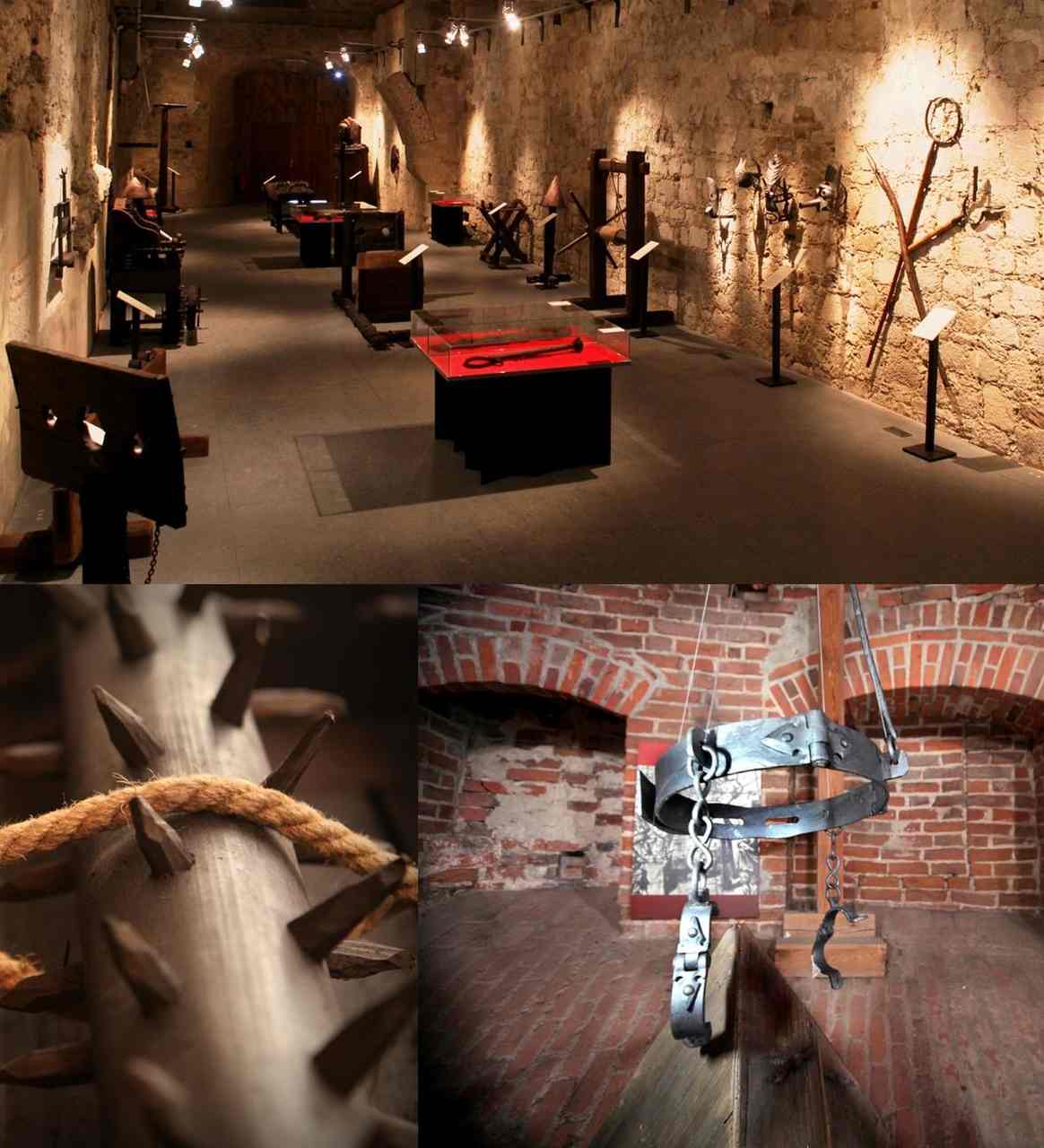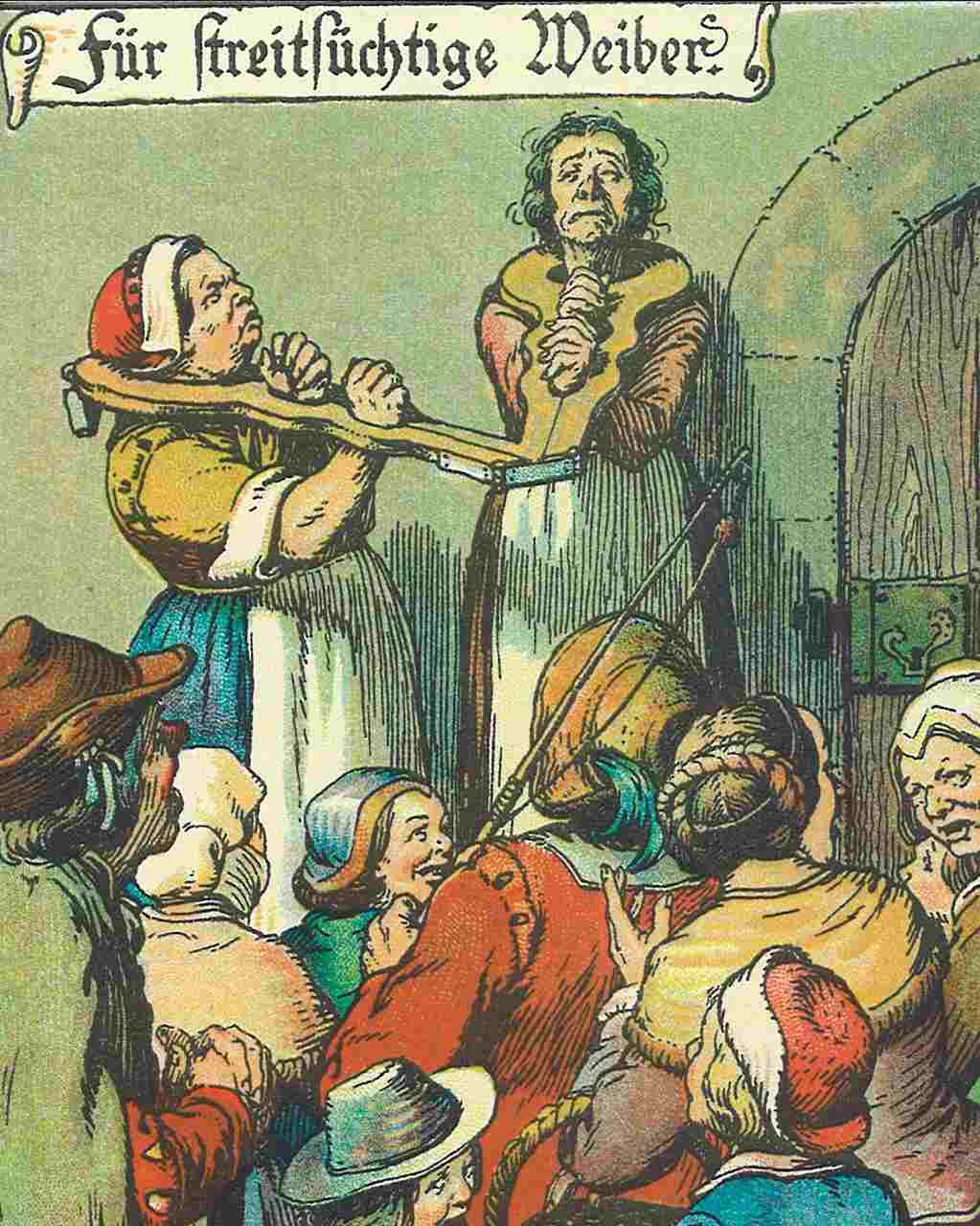
Torture
At times when confession was the queen of evidence, torture helped to quickly resolve the question of guilt. Torture devices can be divided into three groups. The first one was used to carry out the capital punishment, namely death. The second one was for coercing confessions and admissions of guilt, and the third, the “mildest” one, for imposing punishments whose main feature is dishonoring a person, i.e. public humiliation. All of the above mentioned methods were used in criminal trials in Europe in accordance with the law. An interesting judicial practice in those times was the trial by ordeal, which was considered a judgement of God. This specific measure of evidence was based on the generally accepted assumption that God would help the innocent by performing a miracle on his behalf. If a person subjected to various trials or tortures, comes out victorious and survives, it means that he is innocent.
Capital Punishment
Beheading with an axe was often the ending of witchcraft trials, and in its frequency of use it was only surpassed by burning at the stake. If there were aggravating circumstances, such as physical contact with the devil or a blood pact with him, beheadings were carried out at the stake, the victim’s remains were burned and the ashes were scattered. Also other devices were used to carry out the capital punishment, e.g. the garrotte or the impalement.
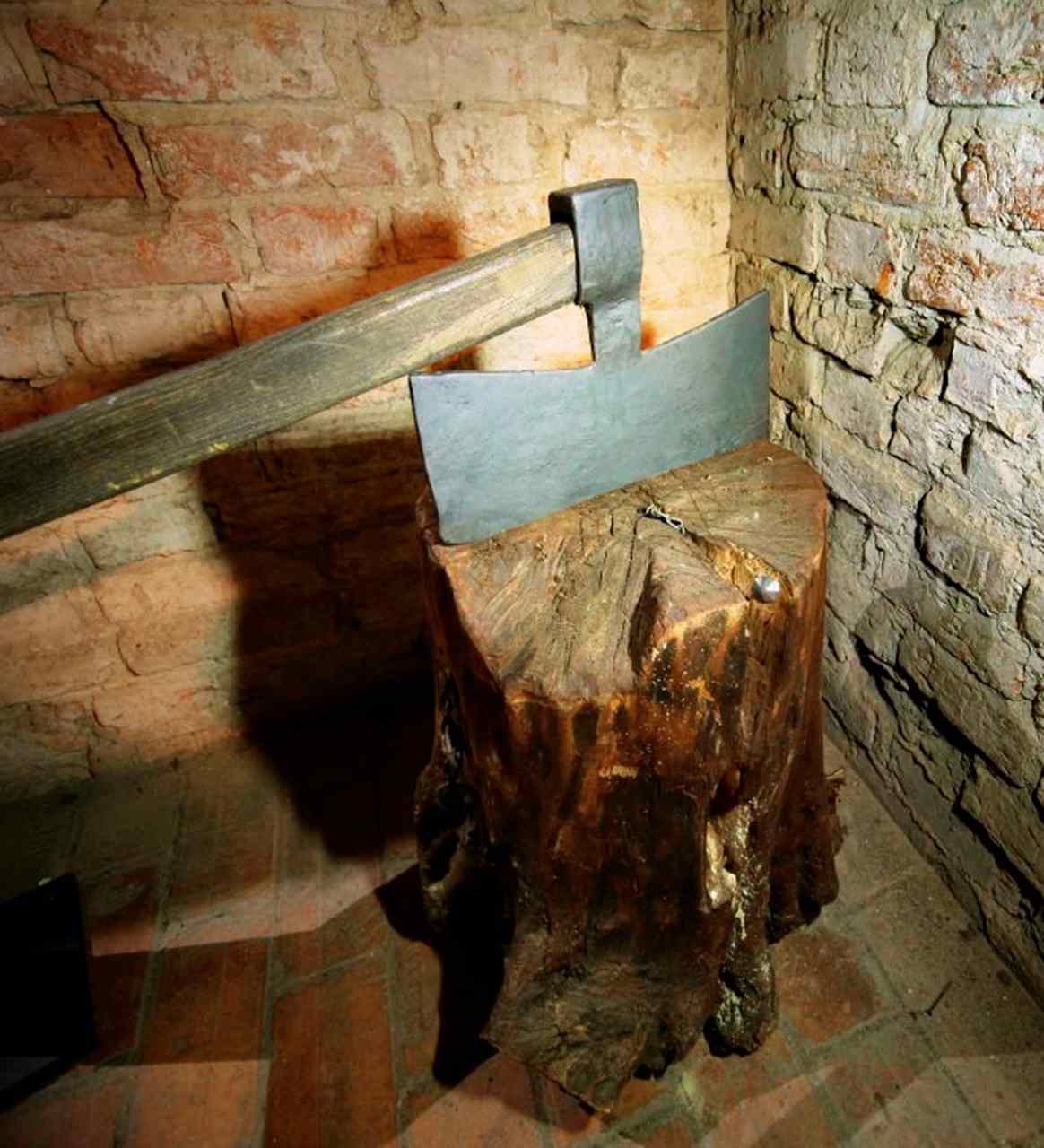
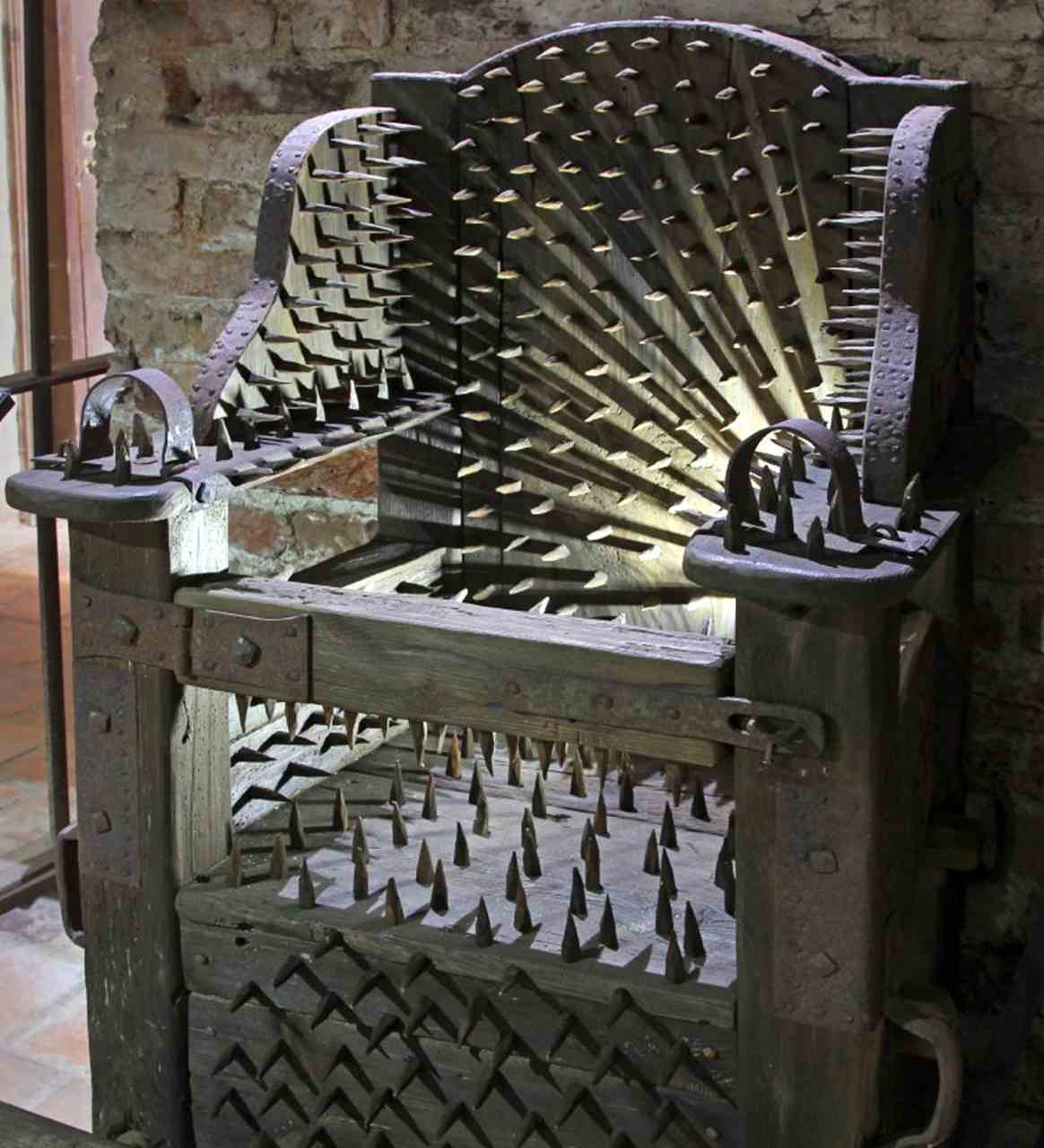
Coercion of Testimonies
Interrogators devoted a lot of time, work and imaginativeness to inventing and improving more and more elaborate methods of inflicting pain on the interrogated. The “interrogation chairs” came in different shapes, sizes and variations. However, all of them were equipped with spikes and fasteners to keep the victim motionless. The tortures lasted many hours and were often accompanied by flogging, tearing the body with pliers, crushing fingers or branding the victim.
Public Humiliation
Putting in the pillory, forcing to wear the mask of infamy or the frock o penance was commonly used for minor offences. It was considered as a mild punishment, but it could turn into a cruel and unbearable torture, which often ended in death. When, for example, the victim in the pillory was slapped in the face, pelted with stones or mud, had boiling water poured over him and was often maimed.
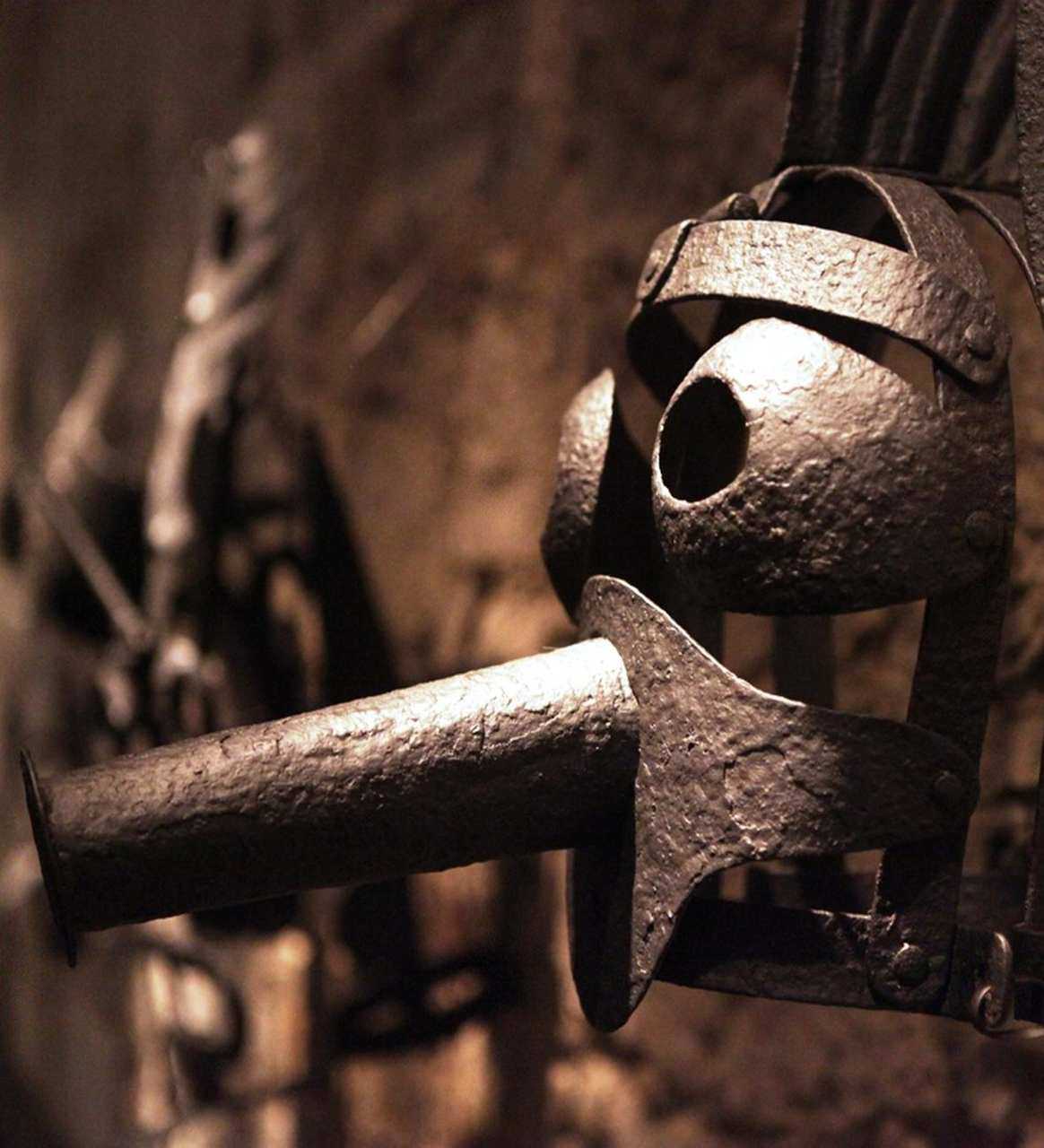
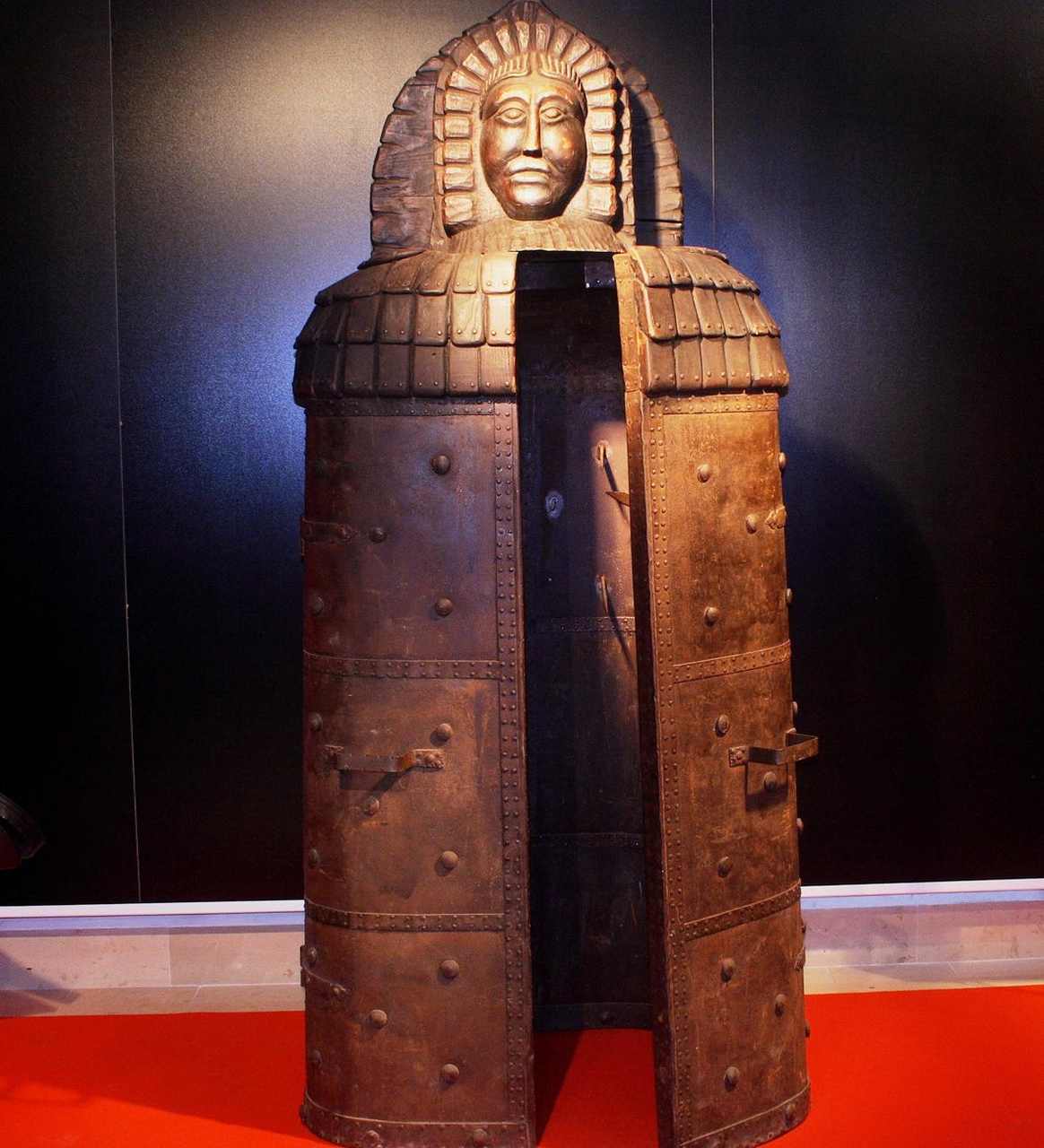
Iron Maiden
This device is also known as the Virgin of Nuremberg. It got its name from the fact that its exterior resembled a Bavarian girl and also because it was constructed in the basement of the courthouse in Nuremberg. The convict was locked up inside, where very sharp spikes pierced his body. The location of the blades was carefully thought out. They injured various parts of the body without damaging the vital organs, so the victim was doomed to a very long and cruel agony.
Water Torture
The interrogated person was put on his back on the bench with his arms and legs stretched out and was forced to drink (with the help of a funnel) large quantities of water. Often the naked victim was exposed to a constant stream of ice cold water for several hours or days. It is worth noting that this torture was considered “light”, and the testimony obtained through its use was described in trial documents as “spontaneous or voluntary” and obtained “without torture”. This is the only torture which, in its unchanged form, is still used in some countries today.

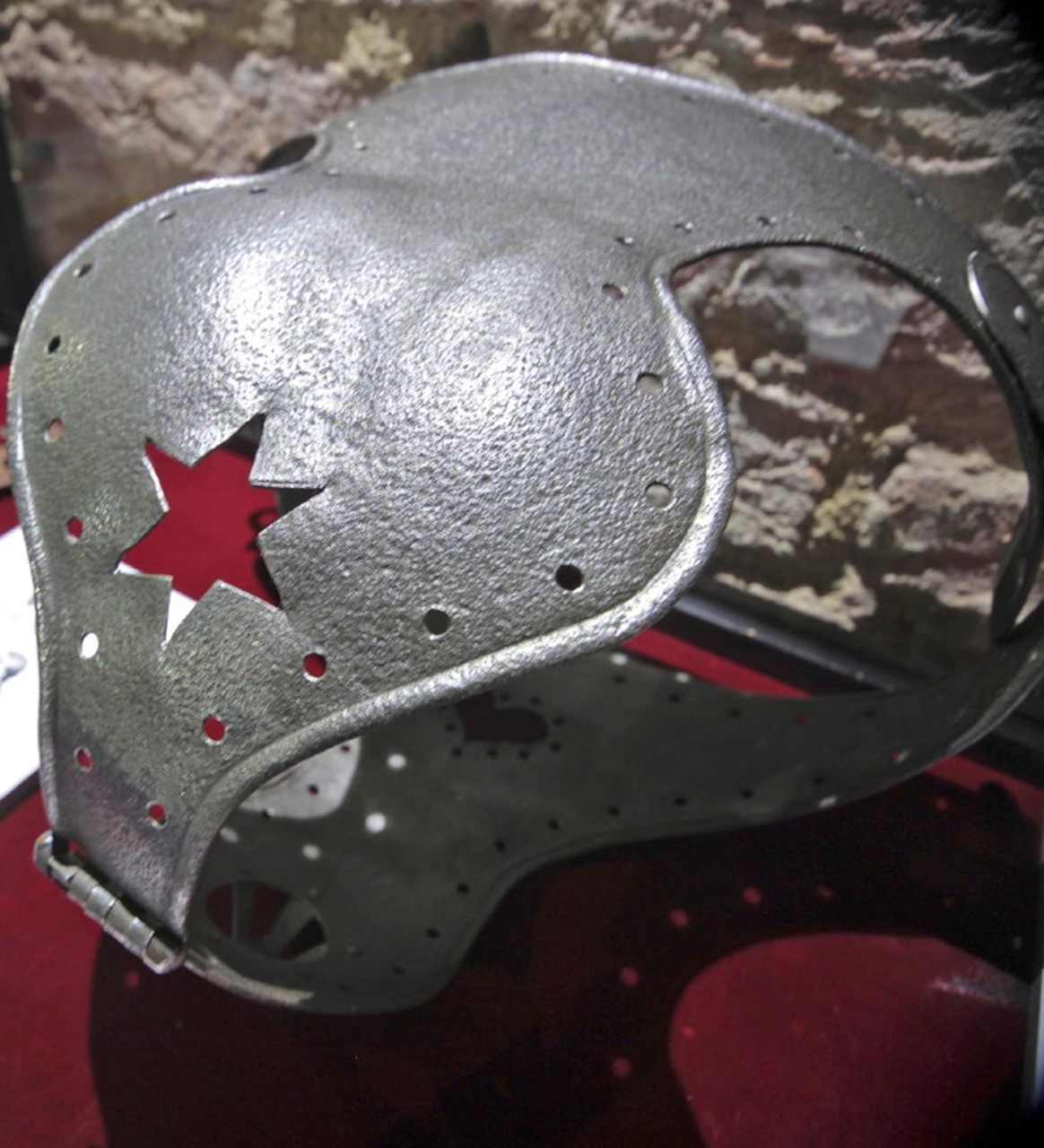
Chastity Belt
As tradition has it, the belt was used to preserve the faithfullness of the knight’s wife to him, when he left for the Holy Land on the Crusades. For hygiene reasons, it is rather unlikely that this was possible for the entire duration of the Crusade. Probably most often chastity belts were used as protection against rape, during short stops of troops, travels, lodging in inns, etc.
Witches
Witch hunt reached its greatest intensity in the period from the 15th to the 17th century, after the publication of the infamous “inquisitors’ manual” entitled “Malleus Maleficarum” (Witches’ Hammer). Virtually any woman could be accused of witchcraft, tortured, and burned at the stake, under any pretext. The woman accused of witchcraft was subjected to tests, e.g. she was thrown into water with her hands and feet tied, if she sank and drowned, her innocence was acknowledged, but if she floated on the water surface, she was burned at the stake. Another peculiar testing was weighing, if the accused was heavier than 49.5 kg, she could not be a witch, because the flying broom (according to the “experts” of the time) could only lift 49.5 kg.
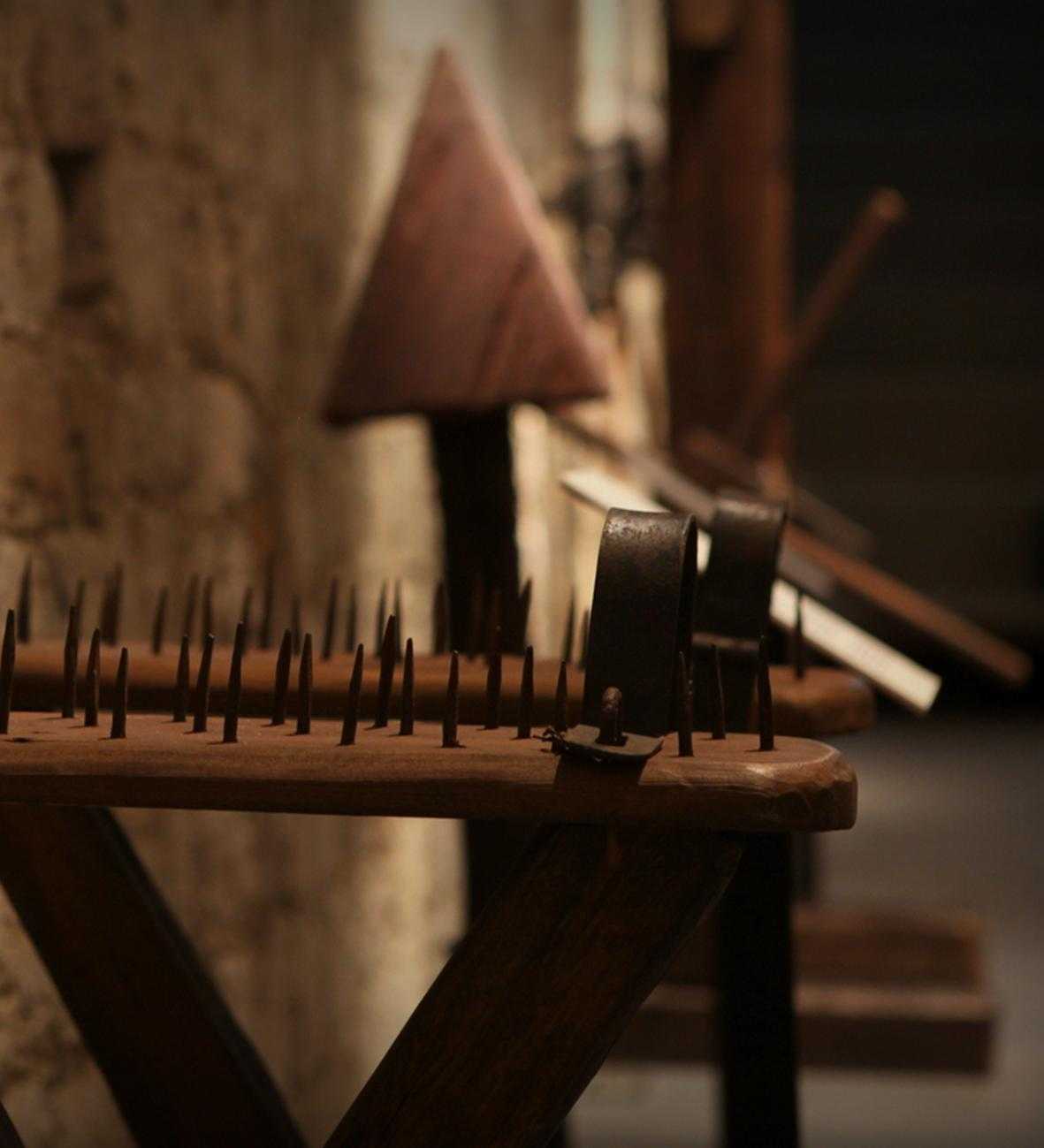
The Exhibition
The exhibition has a moralistic dimension. Our aim is to encourage visitors to reflect and ask questions about mankind and its dark nature, such as: ideologies change, laws change, but do people change; what kind of exhibitions will be made in 400 years about our present times? The exhibition consists of more than 60 objects, 150-500 m² are needed for their presentation, in one or more halls. The size of the exhibition can be adapted to your needs and possibilities. More details can be found in the tab “ABOUT US” and in the CATALOGUE OF THE EXHIBITION.
